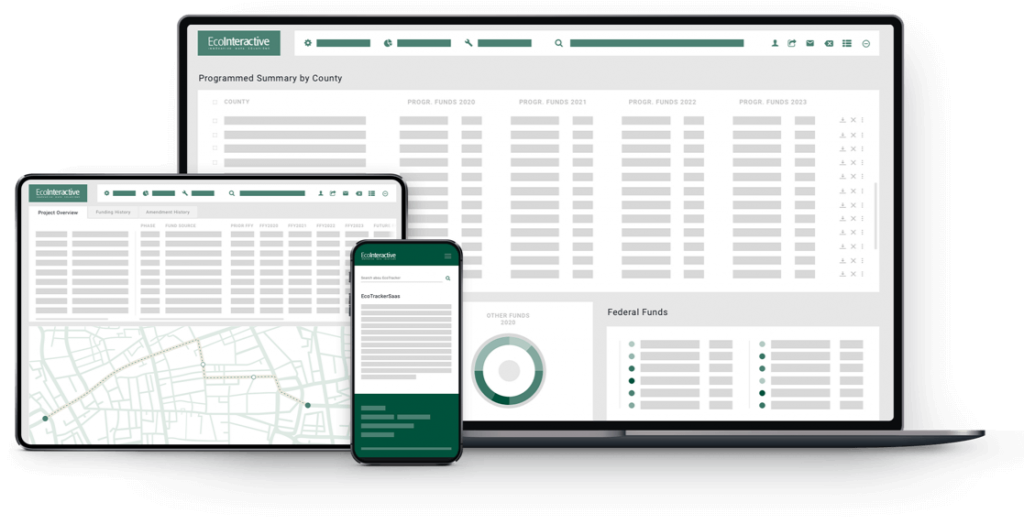Metropolitan Transportation Plans (MTP) Overview

- 7th October 2021
Kristen Z, Transportation Planner
[<5 Minute Read]
What is an MTP?
Metropolitan Planning Organizations (MPOs) have been producing Metropolitan Transportation Plans (MTPs) for decades. They have been a long-standing requirement of federal transportation legislation, which requires that these plans address several planning factors. These factors include economic vitality, safety, security, accessibility, mobility, environment, preservation, integration and connectivity, resiliency and reliability, and travel and tourism.
In addition to demonstrating how the MTP addresses federal factors, the MTP also defines goals for the metropolitan area’s transportation system. Whether it be safety, quality of life, economic development or other over-arching means for how the metropolitan transportation system supports the broader goals for the metro area, the MTP documents the priorities for the metropolitan area’s transportation system.
The MTP planning process involves MPOs evaluating the users and the needs of the multimodal transportation system in its metro area, including its highways, transit services, rail operations, local systems and bicycle / pedestrian systems. Data is gathered, public input is solicited and the resulting plan is intended to guide investments by the various entities in the region.
In addition to following state practice planning processes, MTPs also must comply with several federal requirements, including ensuring the plan is “fiscally constrained.” Fiscally constrained means the total of all of the projects and strategies listed in the plan must be less than or equal to the total of the projected revenues. In addition, MTPs must include a fairly detailed project list. EcoInteractive’s Project Tracker software can be customized to provide an administrative portal for MPO staff to manage MTP projects at the update and amendment stage, and a public facing portal to view the projects.

EcoInteractive’s ProjectTracker Software
Why is an MTP Developed?
MTPs are developed for several reasons. For one, they are required. For several decades now, federal transportation legislation has required MPOs to develop MTPs. They are also used to guide overall investment in the metropolitan area’s transportation system. They provide an opportunity for MPOs to define the priorities and goals for the metropolitan area’s transportation system, which can include system safety, system preservation, economic development or quality of life. Because MTPs are re-evaluated every four to five years, it provides the metropolitan area an opportunity to re-evaluate its priorities on an on-going basis.
For larger MPOs that award sub-allocated funding, the MTP provides the first opportunity for local governments and state DOTs to submit projects for consideration. All projects that want to compete for suballocated funding must be listed in the MTP. In addition, competitive federal grants, any potential earmarks and state grants often require projects to be included in the MTP prior to application to demonstrate the importance of the project to the metropolitan area.
Who Participates in the MTP Process?
Carrying out an MTP planning process is a big job involving a large assortment of people. The MPO Board oversees the process and ultimately is asked to adopt the plan. The MTP planning process can be carried out by MPO staff, by outsourced planning consultants or a combination of both. Local governments, the state DOT, the general public and a variety of stakeholders are involved. Federal regulations define certain types of stakeholder groups that must be involved and most MPOs work hard to reach out to as many stakeholders as possible.
For the purposes of the MTP, stakeholders are defined as any person or entity that is dependent on or uses the transportation system, so everyone from drivers to transit customers to freight companies to schools. EcoInteractive’s Project Tracker software provides a public facing portal to view the proposed and adopted projects that MPOs can utilize for their MTPs. In addition, the division Federal Highway Administration office and the regional Federal Transit Administration (FTA) is often involved, providing guidance and direction to the MPO.
Who Benefits from the MTP?
MTPs have several beneficiaries. They document the vision, goals, policies and projects for the metropolitan area’s multimodal transportation system to taxpayers, regulators, the press, partners, stakeholders and other interested parties. They also benefit MPOs by providing justification for how the MPO and its members makes its investment choices and other resource allocation decisions.
Example of an MTP
The Encompass 2045 Plan developed by the Association of Central Oklahoma Governments (ACOG) is an example of an MTP. The Encompass 2045 Plan provides a common framework for guiding transportation decisions and investments in the Oklahoma City metro area. It defines seven goals for the metro’s transportation system: Connectivity, Economic Strength, Equity and Options, Healthy Communities, Performance, Safety and Security and System Preservation. It defines objectives, and a path forward for how to accomplish the goals – including specific action items.
Check out the Association of Central Oklahoma Governments (ACOG) MTP out for yourself at http://www.acogok.org/transportation-planning/encompass-2045-plan/.
Loved this post and want to learn more? Check out what we’ve done for some of our customers and see how transformative a modern database can be when it comes to managing transportation data!

